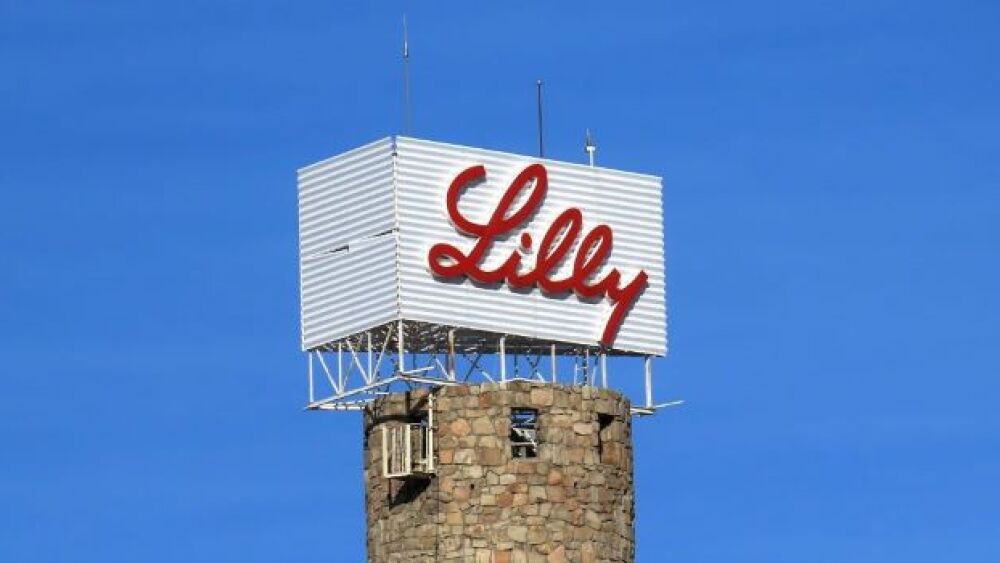Eli Lilly and Company’s projections for next year exceed Wall Street projections for the company, predicting 2022 revenue of $27.8 billion to $28.3 billion.
Cristina Arias/Cover/Getty Images
Eli Lilly and Company’s projections for next year exceed Wall Street projections for the company, predicting 2022 revenue of $27.8 billion to $28.3 billion. The company presented updates on its guidance for 2022, citing its ambitious goals of launching 20 new therapies over the 10-year period of 2014 to 2023, having delivered 16 of them already with plans to launch five more in the next two years.
The potential launches are tirzepatide, donanemab, pirtobrutinib, lebrikizumab and mirikizumab. Tirzepatide is already being reviewed for type 2 diabetes by the U.S. Food and Drug Administration (FDA) and European Medicines Agency (EMA), and has been submitted to seven other markets, including Japan. Mirikizumab has had positive Phase III readouts in moderately-to-severely active ulcerative colitis, while lebrikizumab has shown potential in moderate-to-severe atopic dermatitis.
In the oncology space, driven by its acquisition of Loxo Oncology, Lilly initiated a rolling submission to the FDA for pirtobrutinib for mantle cell lymphoma, with a completed submission in 2022 and hopes of approval in early 2023.
Intriguingly, the fifth drug is donanemab, which the company is developing to treat Alzheimer’s disease. Perhaps emboldened by the FDA’s approval of Biogen’s Aduhelm (aducanumab) for Alzheimer’s, the company continues to develop donanemab. The drug is a monoclonal antibody that targets a modified form of beta-amyloid plaque known as N3pG. In July, the company presented data from the Phase II TRAILBLAZER-ALZ study, which supported the argument that reductions in beta-amyloid in Alzheimer’s disease slows cognitive decline.
In one analysis, Lilly reported larger changes to amyloid plaques after treatment with donanemab was “highly associated with less cognitive decline.” Also, the patients with the most plaque clearance at 24 weeks had less progression of tau, another abnormal protein associated with Alzheimer’s. A second analysis showed the drug caused a rapid decrease of a biomarker associated with Alzheimer’s pathology, plasma P-tau217.
“Lilly’s accomplishments in recent years are impressive, but it’s where we are going that most excites us,” said David A. Ricks, Lilly’s chairman and chief executive officer. “We’ve driven results over the last four years, successfully launched new medicines, and invested in high-impact R&D that has set us up for a truly exciting new year. Bringing new practice-changing medicines to patients is our top priority. We have a remarkable opportunity ahead of us to make life better for millions more people around the world.”
From a financial perspective, the company also upgraded its expectations for earnings per share (EPS) for 2021, which are expected to be $6.18 to $6.23 on a reported basis and $8.15 to $8.20 on a non-GAAP basis. They’re expecting $28.0 billion to $28.3 billion for this year’s revenue. The additional revenue reflections sales of its COVID-19 antibodies to the U.S. Government and an updated 2022 NRDL formulary in China. Estimated revenue for this year from the antibodies is projected to be $2.1 billion.
The company’s expected tax rate for the year is 11%.
David Skovronsky, Lilly’s chief scientific and medical officer, and president of Lilly Research Laboratories, said, “I’m very optimistic about the future for Lilly and the patients we serve. In addition to our promising late-stage pipeline, our labs are making new discoveries to bring life-changing medicines to patients who need them. Lilly has significantly improved our development speed and clinical success rates and will continue to apply this focus as we work to maximize the impact of our existing medicines and create new ones.”





